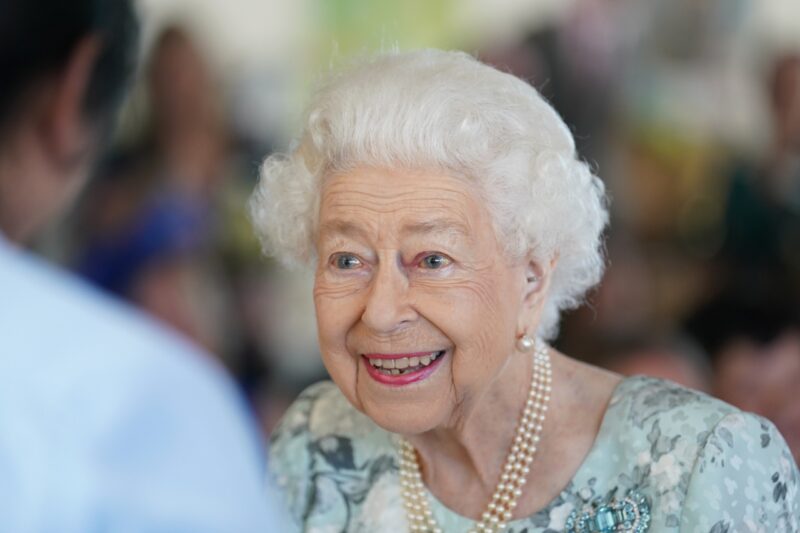Queen Elisabeth II died at the age of 96

The Queen has died aged 96, Buckingham Palace has announced.
“The Queen died peacefully at Balmoral this afternoon. The King and the Queen Consort will remain at Balmoral this evening and will return to London tomorrow,” Buckingham Palace said on Thursday.
Queen Elizabeth II was the longest-reigning monarch in British history and the world’s oldest head of state.
On her death, the Queen’s eldest son and heir, Charles, the former Prince of Wales, has become King of the United Kingdom and 14 Commonwealth realms.
In a statement, he said: “The death of my beloved Mother, Her Majesty The Queen, is a moment of the greatest sadness for me and all members of my family.
“We mourn profoundly the passing of a cherished Sovereign and a much-loved Mother.
“I know her loss will be deeply felt throughout the country, the Realms and the Commonwealth, and by countless people around the world.
“During this period of mourning and change, my family and I will be comforted and sustained by our knowledge of the respect and deep affection in which The Queen was so widely held.”
No official details have been released about what will happen over the coming days, but it is anticipated that the Queen will be given a full state funeral, as is traditional to mark the death of a monarch.
It is also expected that her body will lie in state to allow the public to pay tribute.
The King will sign off the final plans in the coming days.
A life of service
Princess Elizabeth Alexandra Mary was born in London on April 21 1926.
At the time, no one expected her to be Queen as she was third in line to the throne behind her uncle and father.
During her record-breaking reign, she dedicated her life to serving her country and Commonwealth.
In a radio address in 1947 on her 21st birthday, she said: “I declare before you all that my whole life, whether it be long or short, shall be devoted to your service and the service of our great imperial family to which we all belong.”
Princess Elizabeth became Queen in 1952 at the age of 25, when her father, King George VI, died.
Her coronation took place 16 months later at Westminster Abbey.
The Queen held a number of other titles, which will now automatically pass to her son and heir.
She was head of the Commonwealth, commander-in-chief of the British Armed Forces, and supreme governor of the Church of England. She was also patron of more than 600 charities and organisations.
Wife, mother, grandmother
Away from her official duties, she was a devoted wife and mother to four children, and dedicated grandmother to eight grandchildren and 12 great-grandchildren.
In 1947, she married her wartime sweetheart Prince Philip at Westminster Abbey, with a relatively simple ceremony as the country was still recovering from the war.
King George VI wrote to her about his feelings about giving her away: “I was so proud of you and thrilled at having you so close to me on our long walk in Westminster Abbey, but when I handed your hand to the Archbishop I felt that I had lost something very precious.”
The Queen gave birth to Prince Charles in 1948 and to Princess Anne two years later. Prince Andrew and Prince Edward – who were born in 1960 and 1964 respectively – were the first children to be born to a reigning monarch since Queen Victoria had her family.
Until his death in 2021, the Duke of Edinburgh, “her beloved husband”, was always by the Queen’s side.
She described the Duke as her “constant strength and stay” and in 2017 the couple celebrated their 70th wedding anniversary, the only royal couple to ever reach their platinum anniversary.
A record-breaking reign
The Queen’s reign saw 15 different prime ministers, from Sir Winston Churchill to Liz Truss.
She was more widely travelled than any other international leader and the world’s oldest head of state, always using her own distinctive form of quiet diplomacy to represent the United Kingdom around the world.
In 2015, she also became the longest-serving British monarch in history, passing the record set by her great-great-grandmother Queen Victoria.
As head of state and head of nation, Queen Elizabeth II was widely regarded as a symbol of stability, working tirelessly to make sure the monarchy remained relevant during a period of immense social, technological, and economic change.
She was a monarch without equal who will now be mourned across the globe.
What happens now
Upon the Queen’s death, Prince Charles has immediately become the new monarch and he will be known as King Charles III.
Buckingham Palace has outlined details of the period of royal mourning, which is observed by members of the Royal Family, their staff, and soldiers on ceremonial duties.
This will last until seven days after the Queen’s funeral, which is widely expected to take place 10 days after her death, but will be “confirmed in due course”, a Buckingham Palace spokesman said.
A gun salute will be fired for each of the 96 years of the Queen’s life in London at 1pm on the day following her death – at Hyde Park and the Tower of London.
At 6pm a service of prayer and reflection will be held at St Paul’s Cathedral, where there will be 2,000 seats available for members of the public.
Her body will be moved to Buckingham Palace, where it will likely remain for five days.
The government is not expected to announce any other business, unless urgent, to allow focus to fall completely on the Queen.
How to submit an Op-Ed: Libyan Express accepts opinion articles on a wide range of topics. Submissions may be sent to oped@libyanexpress.com. Please include ‘Op-Ed’ in the subject line.
- HoR-Backed Government moves to end fuel subsidy - December 26, 2024
- Libya and Algeria bolster customs cooperation - December 24, 2024
- Reports claim S-400, S-300 missiles moved to Libya - December 24, 2024


